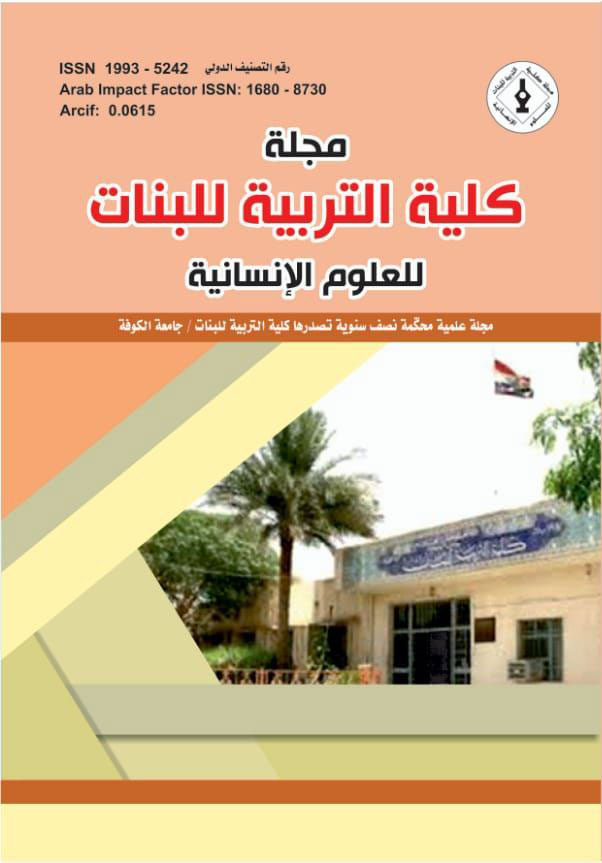Factors shaping the social unit In the civilization of Mesopotamia
DOI:
https://doi.org/10.36327/ewjh.v1i27.11132Keywords:
civilization, Mesopotamia, social unity, cultural identityAbstract
Often surprised researchers in their writings on the civilization of Mesopotamia, about the societal and cultural unity of this population, and this research entitled (Factors shaping social unity in the civilization of Mesopotamia) came, in order to highlight the most important factors that led to the formation of social unity in countries Mesopotamia, and therefore we will demonstrate how that civilization is the unity of the people of Mesopotamia rather than its division, and that the multiplicity of cultural identities in Mesopotamia and the diversity of its population, was a result of the long history of that civilization, as well as the migrations that led to the stability of many different peoples on the land of countries The tributaries, and when we talk about social unity in this research, we refer to the harmony or agreement exists between the people despite their differences.
Downloads
References
باللغة العربية :
باقر , طه ,1946 , ديانة البابليين والأشوريين ، مجلة سومر ، العدد2 , مدبربة الأثار العراقية, العراق.
باقر, طه ,1986 , مقدمة في تاريخ الحضارات القديمة ,ج1, بغداد, وزارة الثقافة العراقية .
بصمة جي , فرج , 1962, نفر, الطبعة الأولى , بغداد, العراق.
رشيد , فوزي ،1988، ترجمات لنصوص سومرية ملكية، بغداد, العراق .
رو, جورج , 1984, العراق القديم ,ترجمة ,حسين علوان , بغداد, العراق.
سليمان , عامر, 1991، اللغة الاكدية ، بغداد .
سليمان , عامر,1989 ، قواعد اللغة الأكدية ، الموصل ,العراق .
شريف , يوسف, 1983, مدن العراق القديمة, مجلة آفاق عربية, العدد ا لسادس, السنة الثامنة, العراق.
عبد الكريم , عبدالله ,1978، "ألقاب حكام السلالات" ، مجلة كلية الآداب ، ملحق ، بغداد ,العراق .
علي , فاضل عبد الواحد , 1979، "الدولة الأكدية" ، مجلة كلية الآداب ، بغداد, العراق .
علي , فاضل عبد الواحد,1983 , صراع السومريين والأكديين مع الأقوام الشرقية والشمالية الشرقية المجاورة لبلاد وادي الرافدين , بغداد , العراق.
علي ,فاضل عبد الواحد ,1990 ، من الواح سومر إلى التوراة ، بغداد, العراق .
كريمر, صموئيل نوح ,1973، السومريون تراثهم، حضارتهم، خصائصهم، ترجمة: فيصل الوائلي الكويت، دار غريب للطباعة.
المصادر باللغة الانكليزية :
Adams, Robert McC.(1981)., Heartland of Cities, Surveys of Ancient Settlement and Land Use on the Central Floodplain of the Euphrates. Chicago: University of Chicago Press.
Cooper, Jerrold S.(1983)., Reconstructing History from Ancient Inscriptions: The Lagash-Umma Border Conflict. Malibu: Undena.
Frankfort, H.,(1943), More Sculpture from Diyala Region, OIP, Vol.LX, Chicago.
Gelb, I. J.1960., Sumerians and Akkadians in their Ethno-Linguistic Relationship. Geneva 8: 258–271.
Haarmann, Harold.(1986) ., Language in Ethnicity: A View of Basic Ecological Relations.Berlin: Walter de Gruyter.
Kamp, K. A., and Yoffee. N.( 1980)., Ethnicity in Ancient Western Asia during the Early Second Millennium BC: Archaeological Assessments and Ethnoarchaeological Perspectives. Bulletin of American School of Oreintal Research 237: 85–104.
Katz, V. 1993., Gilgamesh and Akka. Groningen: STYX.1993.
Kuhrt, Amelie.(1995)., The Ancient Near East, c. 3000–330 BC., 2 vols. London: Routledge.
Michalowski, Piotr.( 1999). Sumer Dreams of Subartu: Politics and the Geographical Imagination.InLanguages and Cultures in Contact at the Crossroads of Civilizations in theSyro-Mesopotamian Realm, ed. K. van Lerberghe and G. Voet, 305–15. Leuven:Peeters.
Postgate N. J. (1992) ., Early Mesopotamia: Society and Economy at the Dawn of History. London and New York: Routledge..
Pritchard, J. B. (1969)., Ancient Near Eastern Texts Relating to the Old Testament. (Princeton: Princeton University Press.
Van de Mieroop, Marc.) 1977)., The Ancient Mesopotamian City. Oxford: Oxford University Press.
Downloads
Published
How to Cite
Issue
Section
License
Copyright (c) 2022 Ahmed Ali; Assistant teacher Waqeid.b.mahdi

This work is licensed under a Creative Commons Attribution 4.0 International License.
which allows users to copy, create extracts, abstracts, and new works from the Article, alter and revise the Article, and make commercial use of the Article (including reuse and/or resale of the Article by commercial entities), provided the user gives appropriate credit (with a link to the formal publication through the relevant DOI), provides a link to the license, indicates if changes were made and the licensor is not represented as endorsing the use made of the work.









